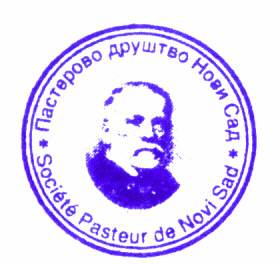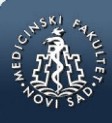md-medicaldata
Main menu:
- Naslovna/Home
- Arhiva/Archive
- Godina 2024, Broj 1
- Godina 2023, Broj 3
- Godina 2023, Broj 1-2
- Godina 2022, Broj 3
- Godina 2022, Broj 1-2
- Godina 2021, Broj 3-4
- Godina 2021, Broj 2
- Godina 2021, Broj 1
- Godina 2020, Broj 4
- Godina 2020, Broj 3
- Godina 2020, Broj 2
- Godina 2020, Broj 1
- Godina 2019, Broj 3
- Godina 2019, Broj 2
- Godina 2019, Broj 1
- Godina 2018, Broj 4
- Godina 2018, Broj 3
- Godina 2018, Broj 2
- Godina 2018, Broj 1
- Godina 2017, Broj 4
- Godina 2017, Broj 3
- Godina 2017, Broj 2
- Godina 2017, Broj 1
- Godina 2016, Broj 4
- Godina 2016, Broj 3
- Godina 2016, Broj 2
- Godina 2016, Broj 1
- Godina 2015, Broj 4
- Godina 2015, Broj 3
- Godina 2015, Broj 2
- Godina 2015, Broj 1
- Godina 2014, Broj 4
- Godina 2014, Broj 3
- Godina 2014, Broj 2
- Godina 2014, Broj 1
- Godina 2013, Broj 4
- Godina 2013, Broj 3
- Godina 2013, Broj 2
- Godina 2013, Broj 1
- Godina 2012, Broj 4
- Godina 2012, Broj 3
- Godina 2012, Broj 2
- Godina 2012, Broj 1
- Godina 2011, Broj 4
- Godina 2011, Broj 3
- Godina 2011, Broj 2
- Godina 2011, Broj 1
- Godina 2010, Broj 4
- Godina 2010, Broj 3
- Godina 2010, Broj 2
- Godina 2010, Broj 1
- Godina 2009, Broj 4
- Godina 2009, Broj 3
- Godina 2009, Broj 2
- Godina 2009, Broj 1
- Supplement
- Galerija/Gallery
- Dešavanja/Events
- Uputstva/Instructions
- Redakcija/Redaction
- Izdavač/Publisher
- Pretplata /Subscriptions
- Saradnja/Cooperation
- Vesti/News
- Kontakt/Contact
 Pasterovo društvo
Pasterovo društvo
- Disclosure of Potential Conflicts of Interest
- WorldMedical Association Declaration of Helsinki Ethical Principles for Medical Research Involving Human Subjects
- Committee on publication Ethics
CIP - Каталогизација у публикацији
Народна библиотека Србије, Београд
61
MD : Medical Data : medicinska revija = medical review / glavni i odgovorni urednik Dušan Lalošević. - Vol. 1, no. 1 (2009)- . - Zemun : Udruženje za kulturu povezivanja Most Art Jugoslavija ; Novi Sad : Pasterovo društvo, 2009- (Beograd : Scripta Internacional). - 30 cm
Dostupno i na: http://www.md-medicaldata.com. - Tri puta godišnje.
ISSN 1821-1585 = MD. Medical Data
COBISS.SR-ID 158558988
SINDROM HIPERMOBILNOSTI ZGLOBOVA I METABOLIZAM U MIROVANJU KOD STUDENATA MEDICINE
/
JOINT HYPERMOBILITY SYNDROME AND RESTING METABOLIC RATE AMONG MEDICAL STUDENTS
Authors
Aleksandra Popović1, Nikola Bakić2, Jovana Drljača2, Dejan Miljković3, Dragica Bulajić2, Borislav Tapavički2, Miodrag Drapšin1
1Univerzitet u Novom Sadu, Medicinski fakultet, Katedra za Fiziologiju
2Univerzitet u Novom Sadu, Medicinski fakultet
3Univerzitet u Novom Sadu, Medicinski fakultet, Katedra za Histologiju i embriologiju
UDK: 616.72-057.875
616-008.9-057-875
The paper was received / Rad primljen: 19.06.2019.
Accepted / Rad prihvaćen: 30.06.2019
Autor za korespondenciju:
Dr Aleksandra Popović
Univerzitet u Novom Sadu – Medicinski fakultet
Katedra za fiziologiju,
Hajduk Veljkova 3, 21000 Novi Sad, Srbija
Telefon: +381 63 75 80 250
e-mail: aleksandra.popovic@mf.uns.ac.rs
Sažetak
Uvod: Benigni sindrom hipermobilnosti zglobova je nasledni poremećaj vezivnog tkiva uzrokovan defektom u strukturi kolagena i elastina ili promenom odnosa podtipova kolagena u samom tkivu. Cilj istraživanja je bio utvrditi prisutnost simptoma i znakova koji prate kliničku sliku osoba sa slabim vezivnim tkivom kod studenata Medicinskog fakulteta u Novom Sadu, odrediti njihov telesni sastav i metabolizam u mirovanju. Materijal i metode: Istraživanje je obuhvatalo grupu od 30 studenata: I grupa sa slabim vezivnim tkivom i II kontrolna. Svim ispitanicima dijagnoza je postavljena pomoću Beighton skora. Simptomi i znaci koji prate kliničku sliku osoba sa slabim vezivnim tkivom su određeni pomoću Brighton kriterijuma. Vrednosti masne mase izmerene su pomoću bioelektrične impedance. Metabolizam u mirovanju utvrđen je indirektnom kalorimetrijskom metodom. Rezultati: Kod osoba muškog pola sa slabim vezivnim tkivom najzastupljeniji znak je luksacija zglobova (60%), kao i umor i teže buđenje ujutru (40%). Kod ženskog pola najzastupljeniji znak je pojava strija na koži (80%), međutim u velikom procentu su prisutni i astenična konstitucija (60%), dioptrija (60%), umor (40%), teže budjenje ujutru (40%), kifoza (40%) i migrene (40%). Prevalencija hipermobilnosti kod muškog pola češća je na levoj polovini tela kada je u pitanju fleksija ručnog zgloba dok je kod osoba ženskog pola hipermobilnost leve polovine tela češća kada je u pitanju ekstenzija prstiju za 90°. U pogledu vrednosti metabolizma u mirovanju nije uočeno postojanje statistički značajne razlike između grupa kao ni u pogledu antropometrijskih parametara. Zaključak: Sindrom hipermobilnosti je praćen raznolikom kliničkom prezentacijom kod mladih osoba.
Ključne reči:
Benigni sindrom hipermobilnosti; laksitas zglobova; metabolizam u mirovanju
Abstract
Introduction: Benign Joint Hypermobility Syndrome is a hereditary disorder of connective tissue caused by a defect in the structure of collagen and elastin. The goal was to determine the presence of symptoms that follow the clinical picture of the students with weak connective tissue at the Faculty of Medicine Novi Sad, their body composition and resting metabolic rate. Material and methods: The study included 30 students: I group of students with weak connective tissue and II group as a control group. Diagnose of joint laxity was confirmed using the Beightonscore and the Brighton criteria. The body mass was measured using the bioelectrical impedance. Resting metabolic rate was determined by indirect calorimetry method. Results: In the male population with joint laxity, the most common symptom is a joint dislocation (60%), as well as fatigue and waking up tired (40%). In the female population, a frequent sign is the appearance of stretch marks (80%), asthenic constitution (60%), dioptre (60%), fatigue (40%), waking up tired (40%), kyphosis (40%) and migraine (40%). The prevalence of hypermobility in male population is more common on the left side of the body when it comes to wrist flexion, while in the female population the hypermobility of the left side of the body is more frequent when it comes to finger extension by 90 °. There are no significant differences between observed groups in resting metabolic rate and body composition. Conclusion: Hypermobility syndrome is a phenomenon with a diverse clinical presentation among young people.
Keywords:
Benign joint hypermobility syndrome; joint laxity; the resting metabolic rate
References:
- Kirk JA, Ansell BM, Bywaters EG. The hypermobility syndrome. Musculoskeletal complaints associated with generalized joint hypermobility. Ann Rheum Dis. 1967;26(5):419.
- Grahame R, Hakim AJ. Hypermobility. Curr Opin Rheumatol. 2008;20(1):106-10.
- McCormack M, Briggs J, Hakim A, Grahame R. Joint laxity and the benign joint hypermobility syndrome in student and professional ballet dancers. J Rheumatol. 2004;31(1):173-8.
- Grahame R. The revised (Brighton 1998) criteria for the diagnosis of benign joint hypermobility syndrome (BJHS). J Rheumatol. 2000;27(7):1777-9.
- Hakim AJ, Cherkas LF, Grahame R, Spector TD, MacGregor AJ. The genetic epidemiology of joint hypermobility: a population study of female twins. Arthritis Rheum. 2004;50(8):2640-4.
- Toker S, Soyucen E, Gulcan E, Kabay S, Ozbek O, Ozveren O et al. Presentation of two cases with hypermobility syndrome and review of the related literature. Eur J Phys Rehabil Med. 2010;46(1):89-94.
- Magnusson SP, Julsgaard CH, Aagaard P, Zacharie CL, Ullman SU, Kobayasi TA et al. Viscoelastic properties and flexibility of the human muscle-tendon unit in benign joint hypermobility syndrome. J Rheumatol. 2001;28(12):2720-5.
- Pacey V, Tofts L, Wesley A, Collins F, Singh‐Grewal D. Joint hypermobility syndrome: A review for clinicians. J Paediatr Child Health. 2015;51(4):373-80.
- Ross J, Grahame R. Joint hypermobility syndrome. BMJ. 2011;342:c7167.
- Murray KJ, Woo P. Benign joint hypermobility in childhood. Rheumatology (Oxford). 2001;40(5):489-91.
- Grahame R. Joint hypermobility and genetic collagen disorders: are they related?. Arch Dis Child. 1999;80(2):188-91.
- Mishra MB, Ryan P, Atkinson P, Taylor H, Bell J, Calver D et al. Extra-articular features of benign joint hypermobility syndrome. Br J Rheumatol. 1996;35(9):861-6.
- Finsterbush AL, Pogrund HY. The hypermobility syndrome. Musculoskeletal complaints in 100 consecutive cases of generalized joint hypermobility. Clin Orthop Relat Res. 1982; (168):124-7.
- Carr AJ, Jefferson RJ, Benson MK. Joint laxity and hip rotation in normal children and in those with congenital dislocation of the hip. J Bone Joint Surg Br. 1993;75(1):76-8.
- Bohora S. Joint hypermobility syndrome and dysautonomia: expanding spectrum of disease presentation and manifestation. Indian Pacing Electrophysiol J. 2010;10(4):158-61.
- Hakim A, Grahame R. Joint hypermobility. Best Pract Res Clin Rheumatol. 2003;17(6):989-1004.
- Gazit Y, Nahir AM, Grahame R, Jacob G. Dysautonomia in the joint hypermobility syndrome. Am J Med. 2003;115(1):33-40.
- Buchholz AC, Rafii M, Pencharz PB. Is resting metabolic rate different between men and women?. Br J Nutr. 2001;86(6):641-6.
- Barron DF, Cohen BA, Geraghty MT, Violand R, Rowe PC. Joint hypermobility is more common in children with chronic fatigue syndrome than in healthy controls. J Pediatr. 2002;141(3):421-5.
- Gedalia A, Garcia CO, Molina JF, Bradford NJ, Espinoza LR. Fibromyalgia syndrome: experience in a pediatric rheumatology clinic. Clin Exp Rheumatol. 2000;18(3):415-9.
- Acasuso-Díaz, Collantes-Estévez E. Joint hypermobility in patients with fibromyalgia syndrome. Arthritis Care Res. 1998;11(1):39-42.
- Lowe JC, Yellin J, Honeyman-Lowe G. Female fibromyalgia patients: lower resting metabolic rates than matched healthy controls. Med Sci Monit. 2006;12(7):CR282-9.
- Seçkin Ü, Tur BS, Yılmaz Ö, Yağcı İ, Bodur H, Arasıl T. The prevalence of joint hypermobility among high school students. Rheumatol Int. 2005;25(4):260-3.
- Adib N, Davies K, Grahame R, Woo P, Murray KJ. Joint hypermobility syndrome in childhood. A not so benign multisystem disorder?. Rheumatology (Oxford). 2005;44(6):744-50.
- Rikken-Bultman DG, Wellink L, van Dongen PW. Hypermobility in two Dutch school populations. Eur J Obstet Gynecol Reprod Biol. 1997;73(2):189-92.
- Clinch J, Deere K, Sayers A, Palmer S, Riddoch C, Tobias JH, et al. Epidemiology of generalized joint laxity (hypermobility) in fourteen‐year‐old children from the UK: A population‐based evaluation. Arthritis Rheum. 2011;63(9):2819-27.
PDF Popović A. et al. • MD-Medical Data 2019;11(2): 081-085
 Medicinski fakultet
Medicinski fakultet